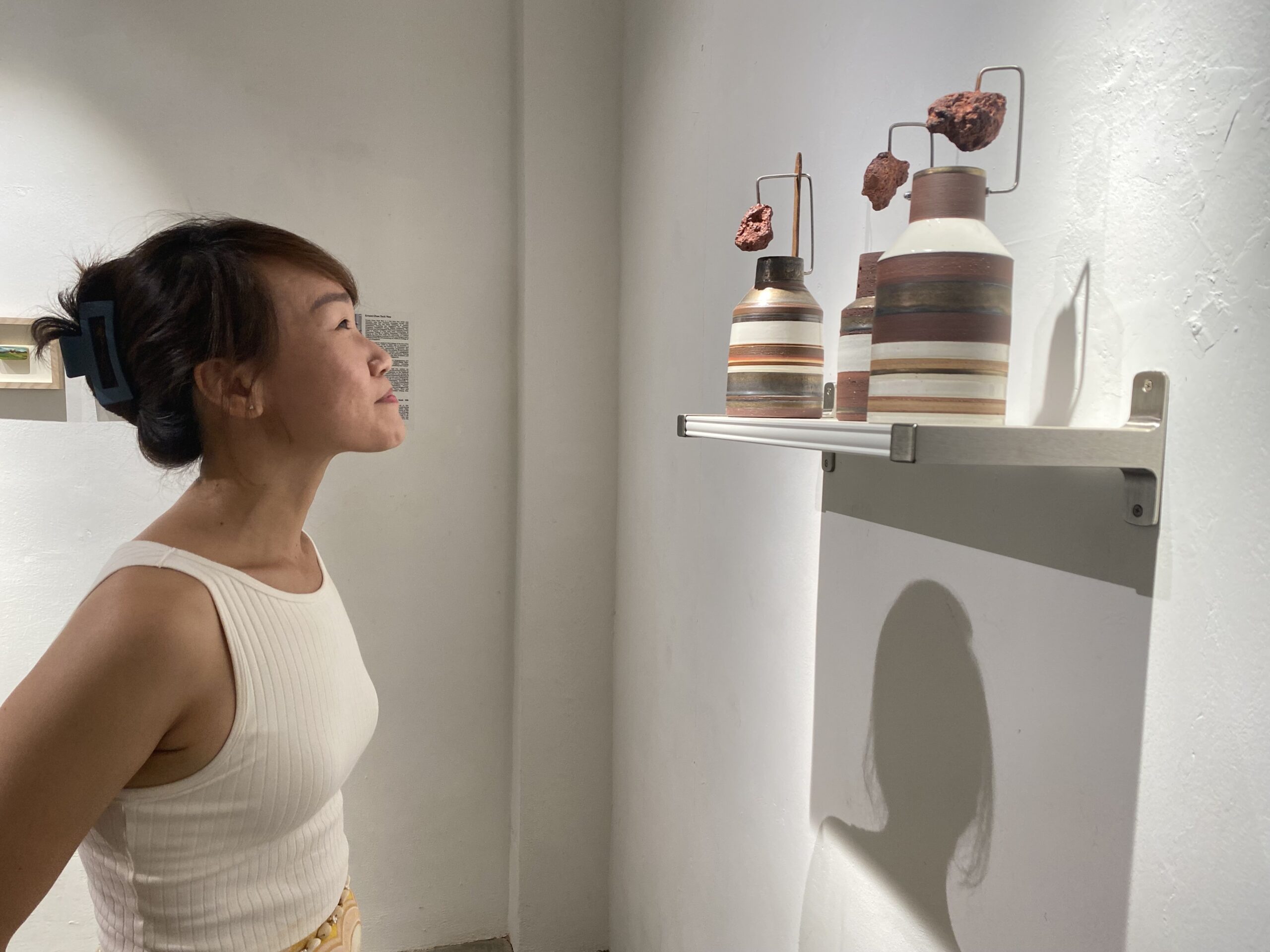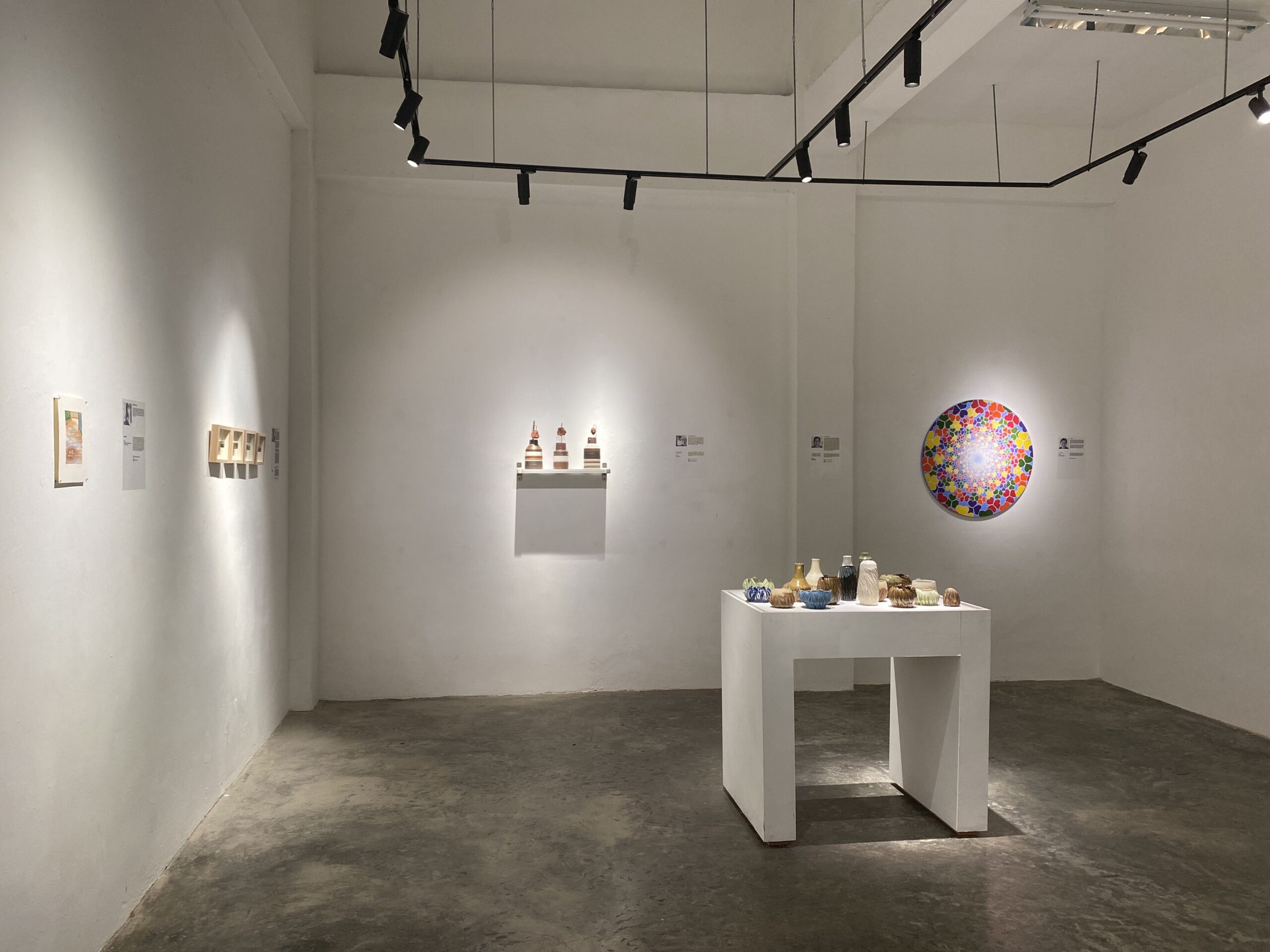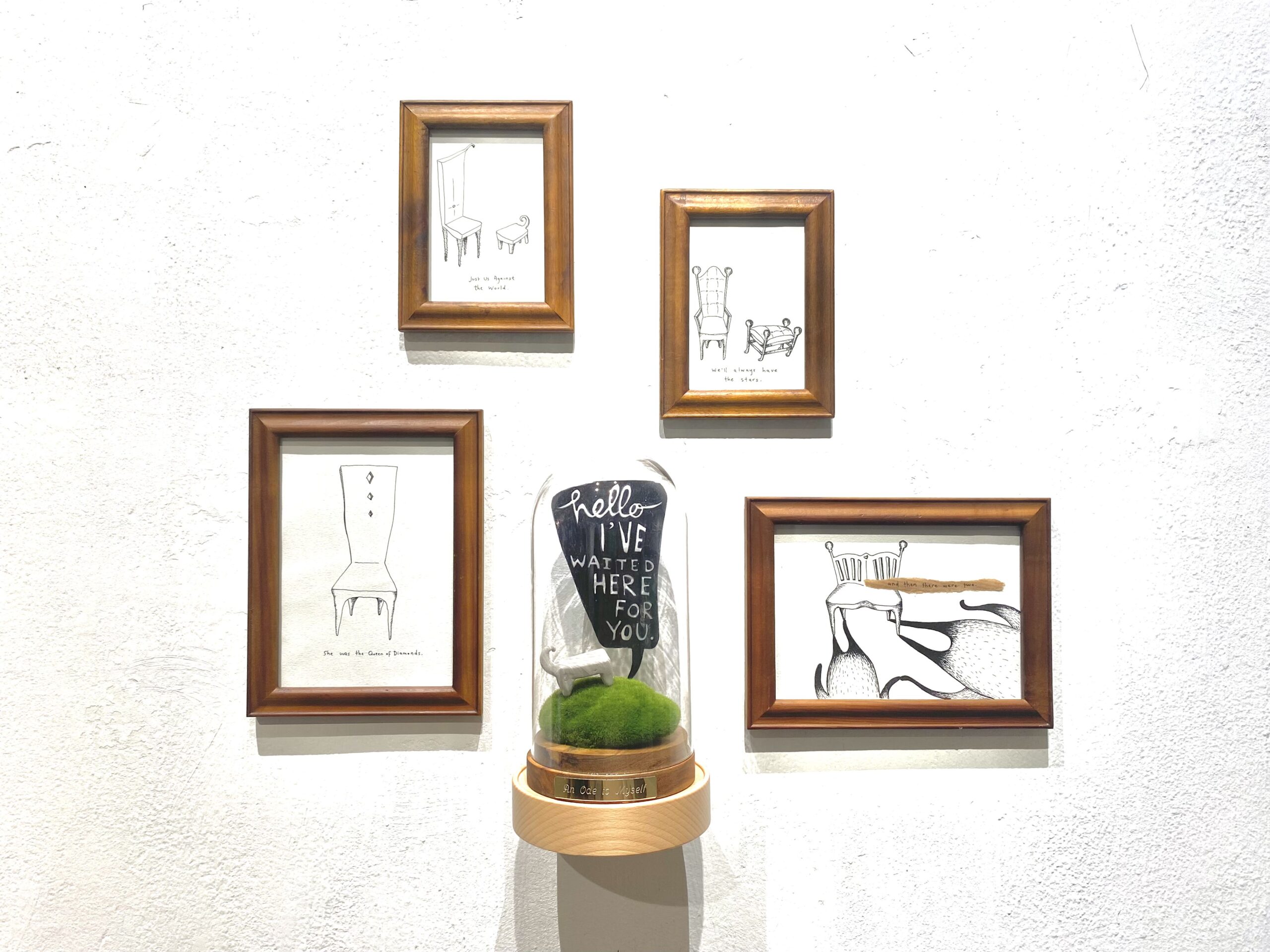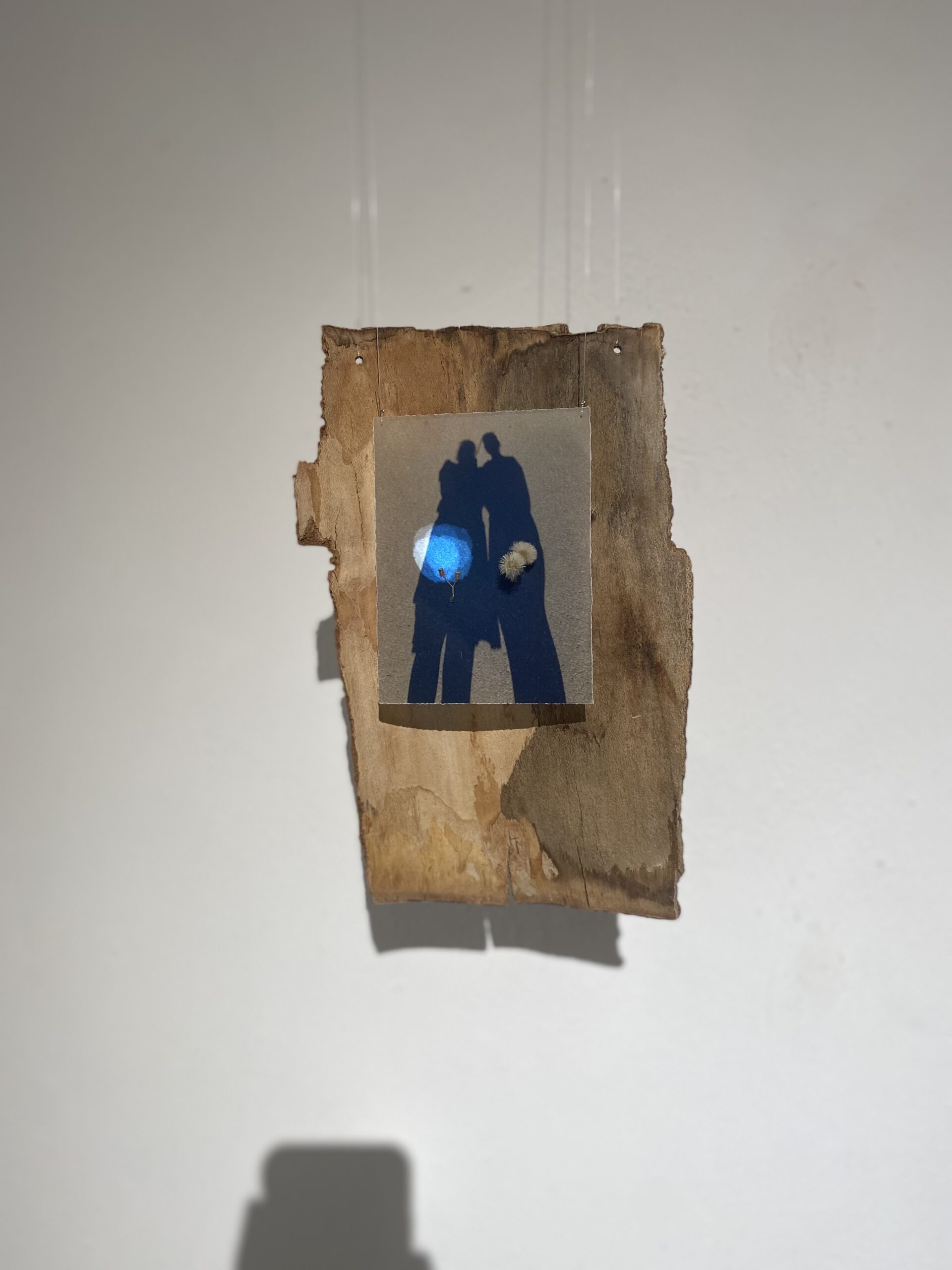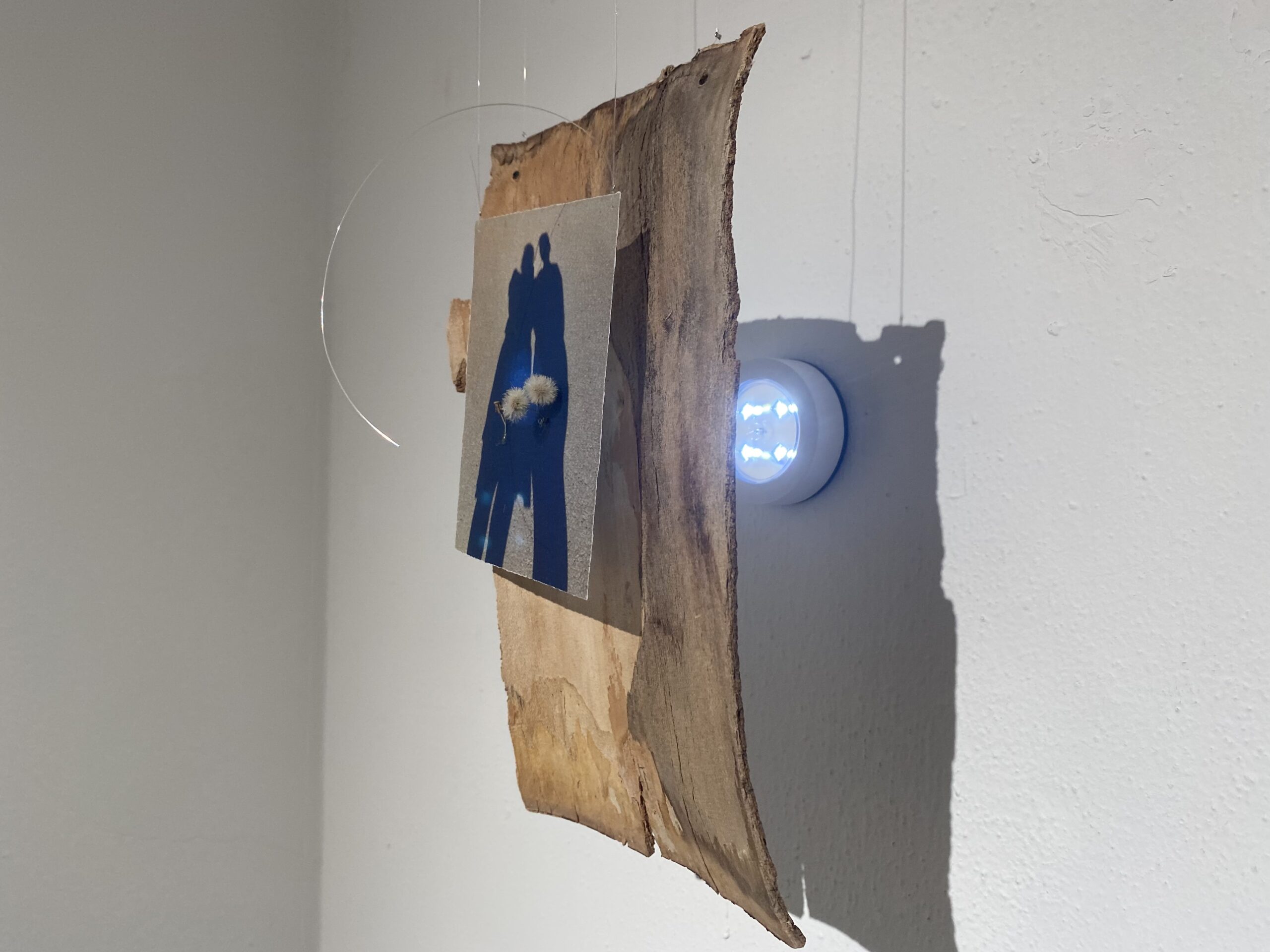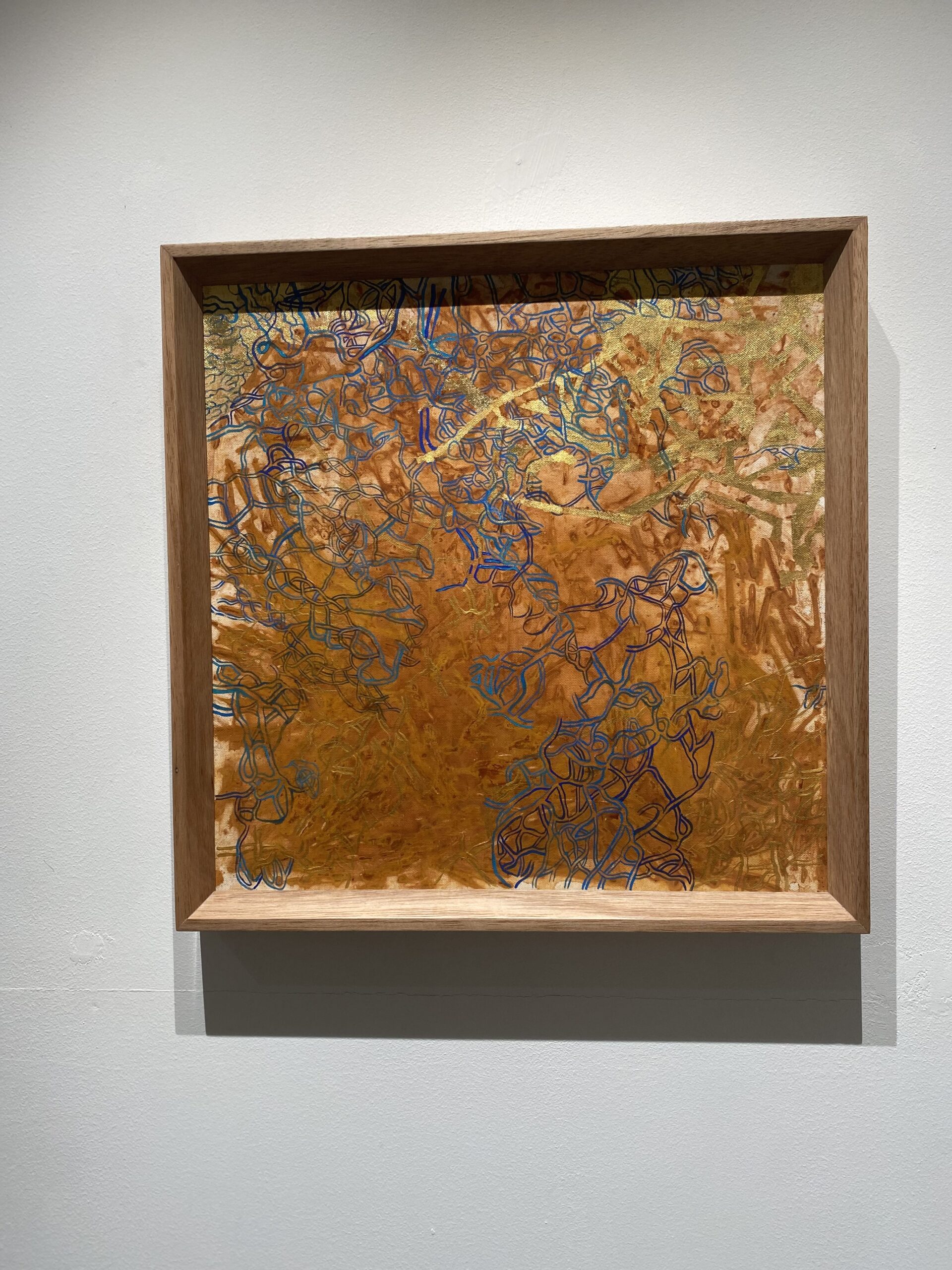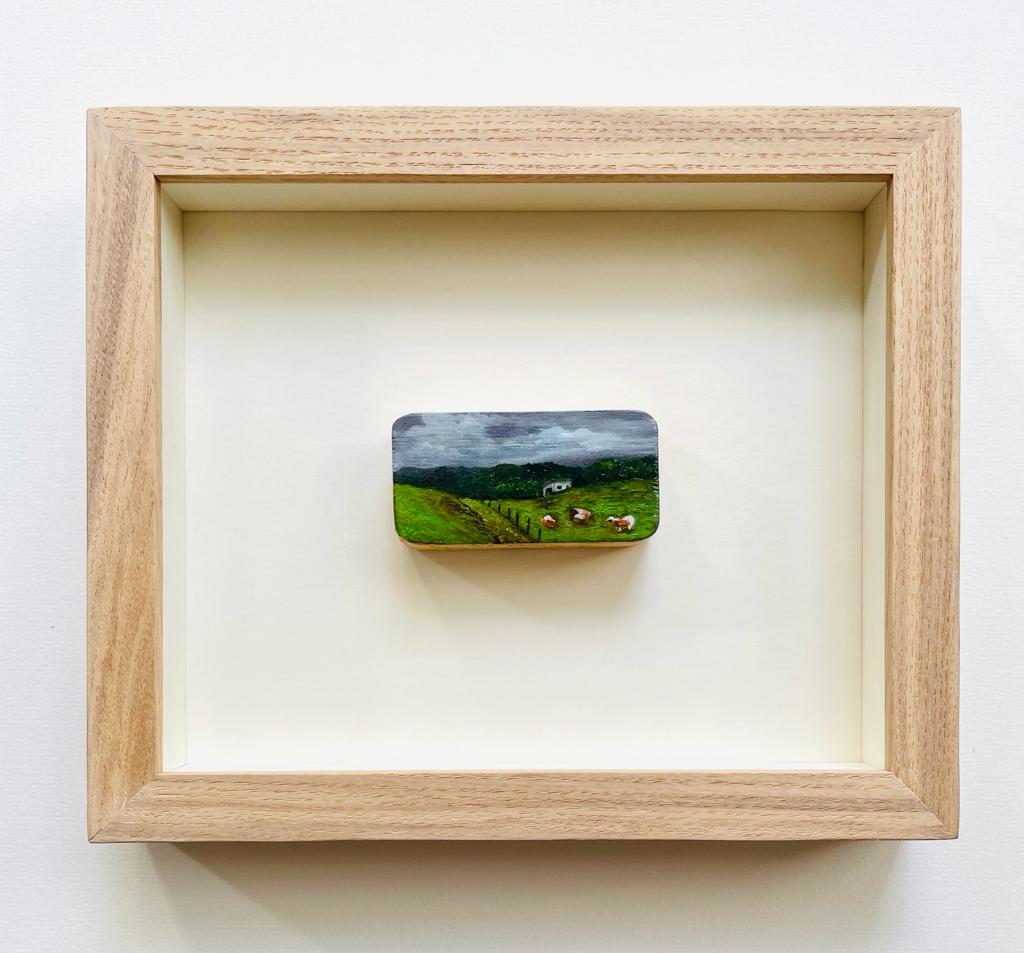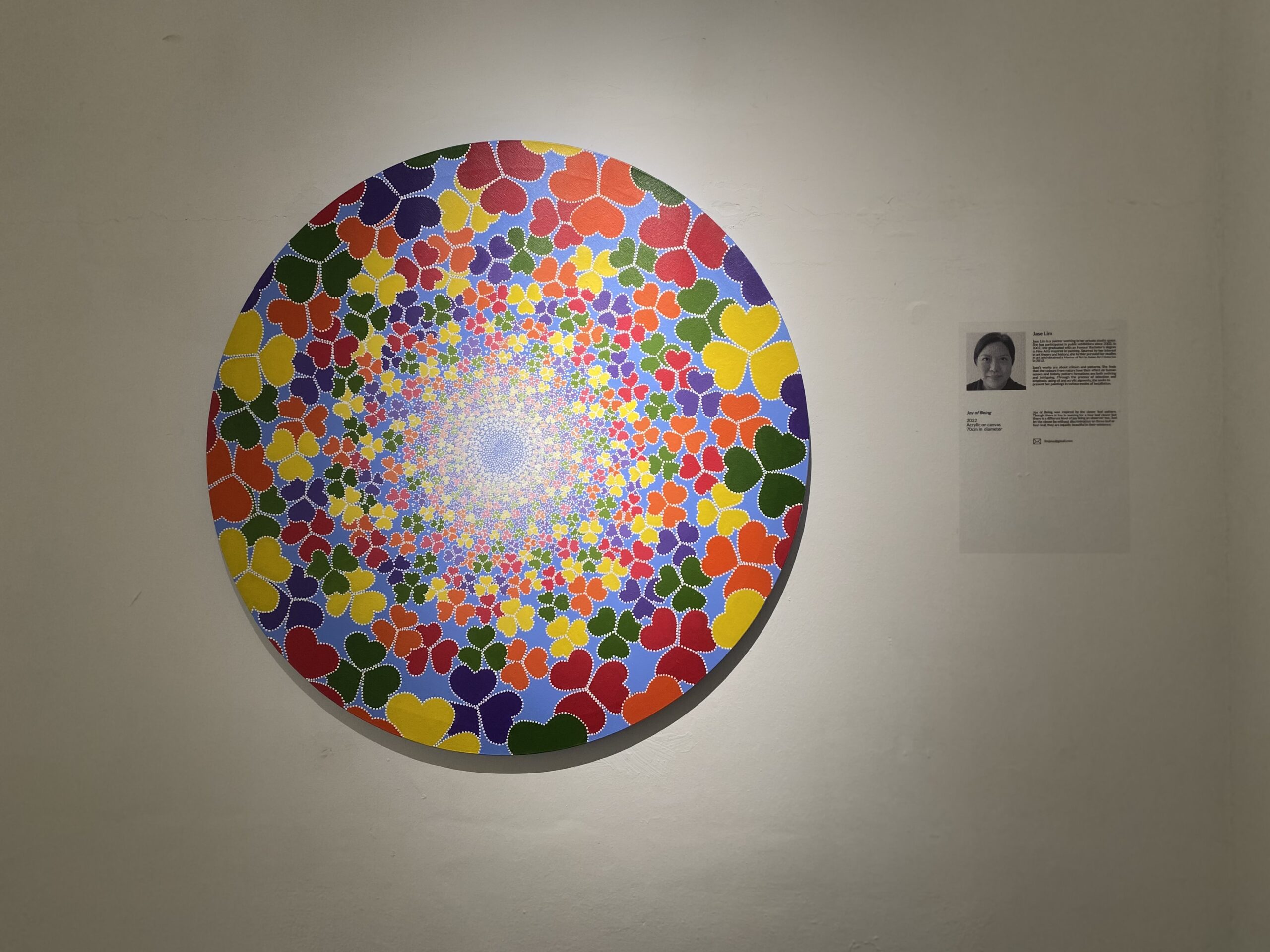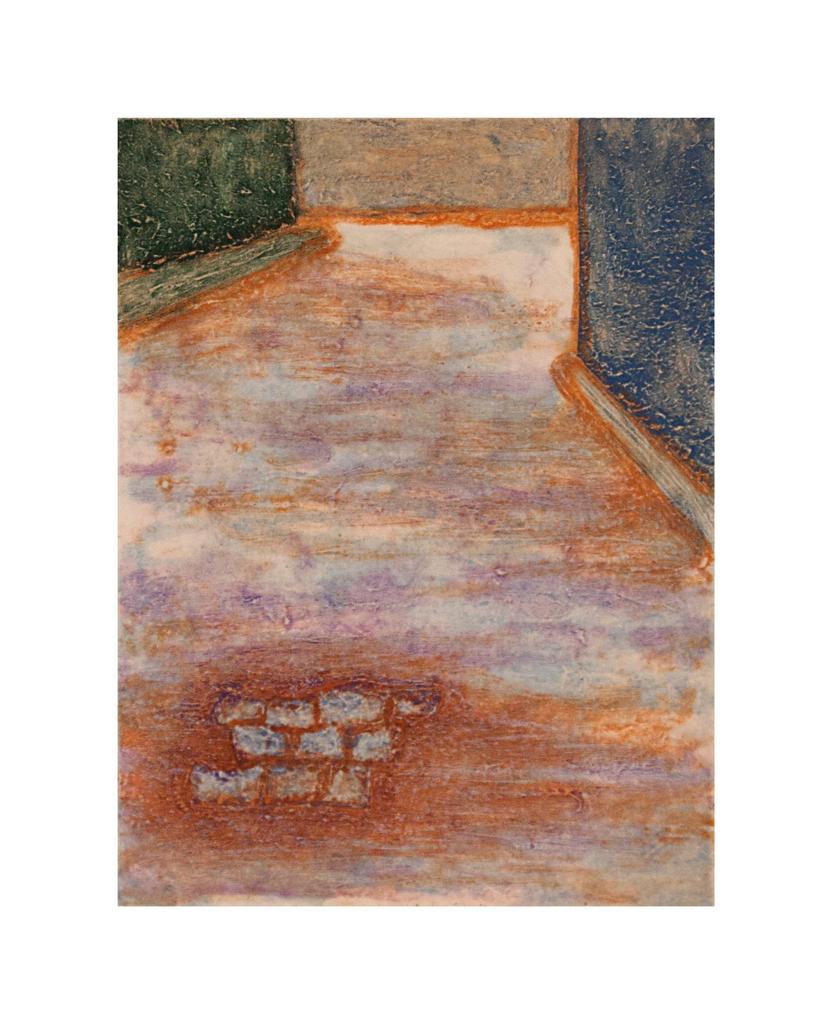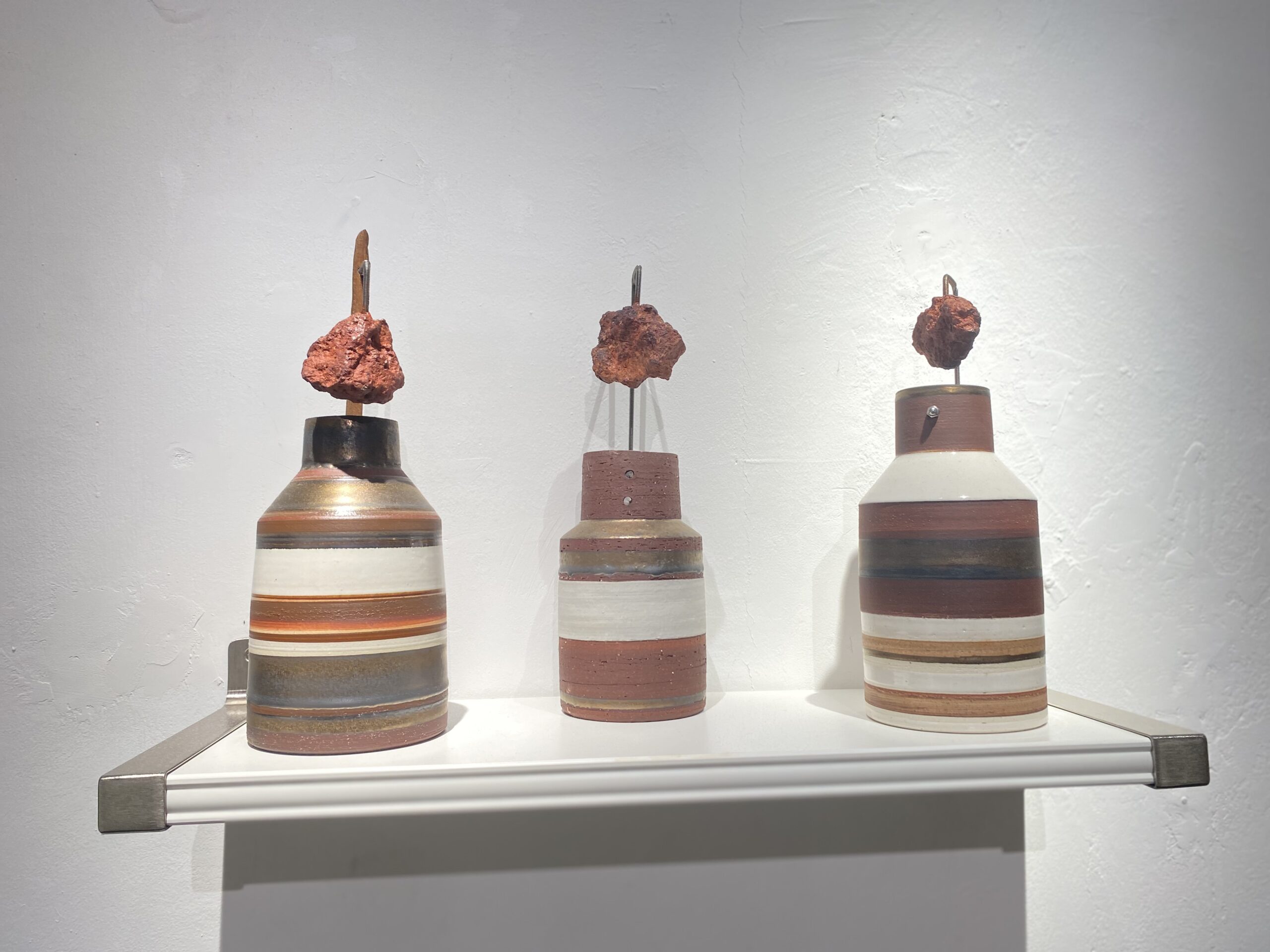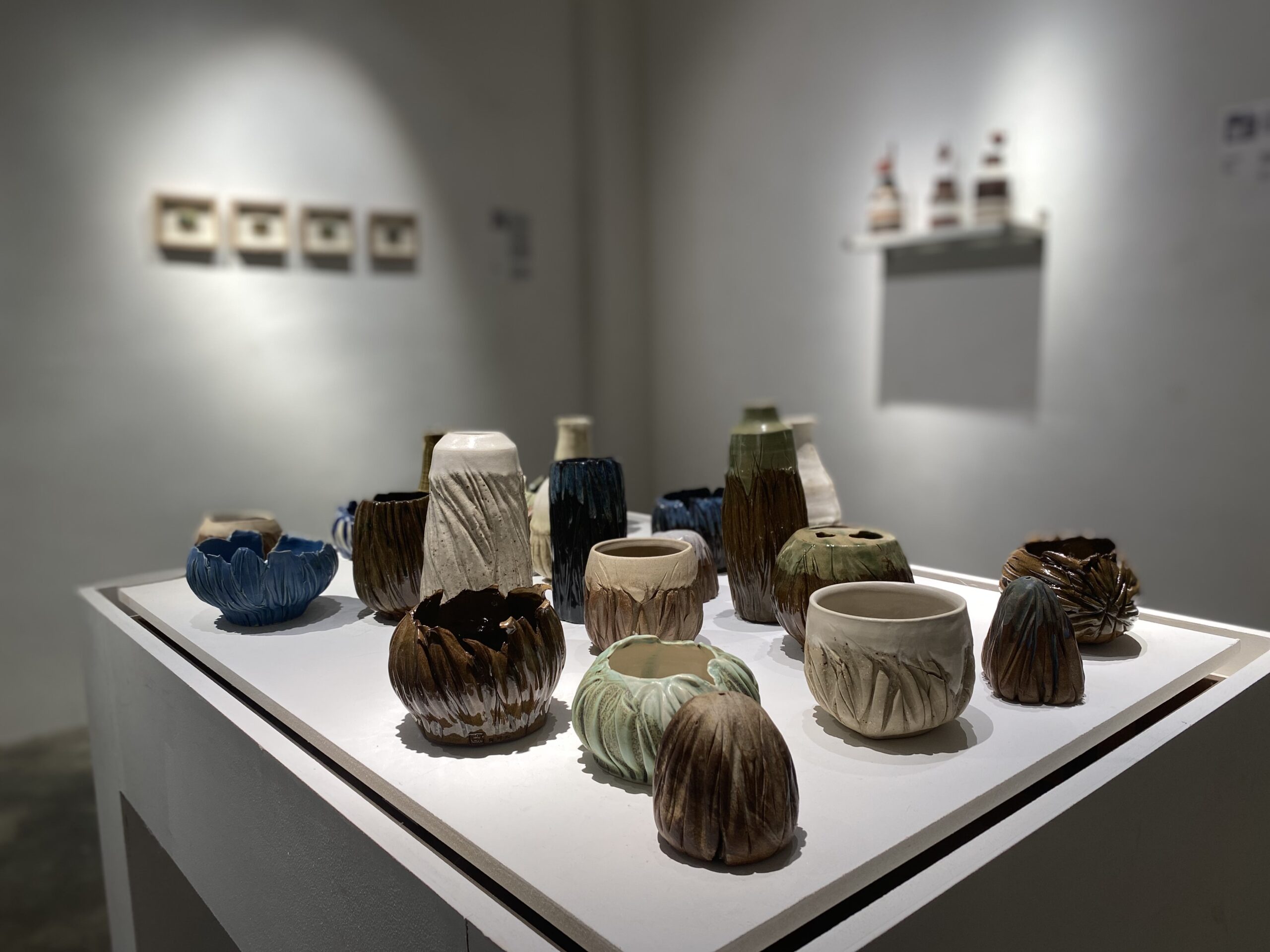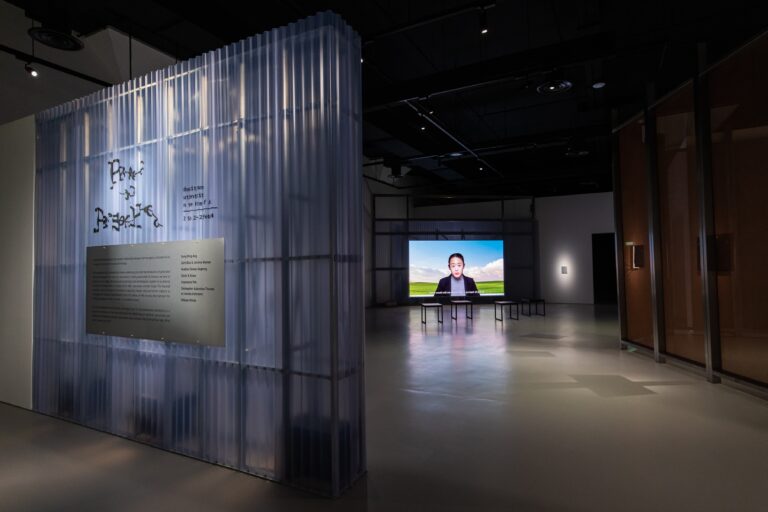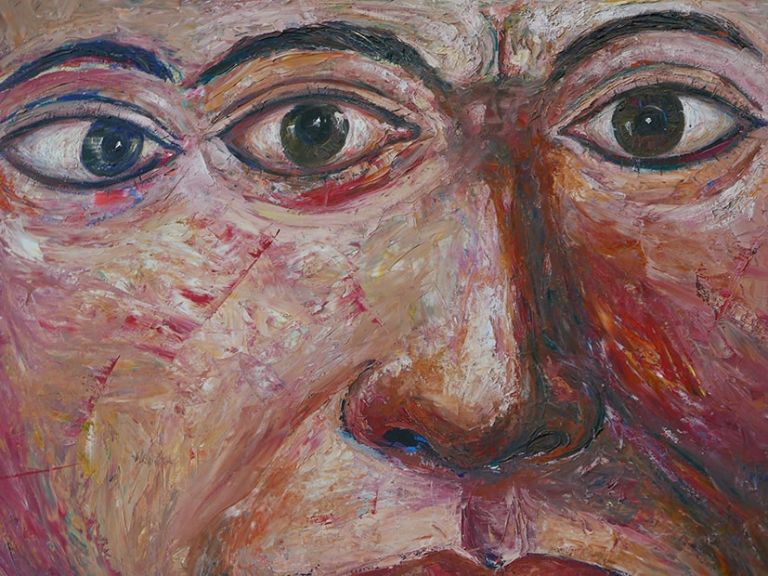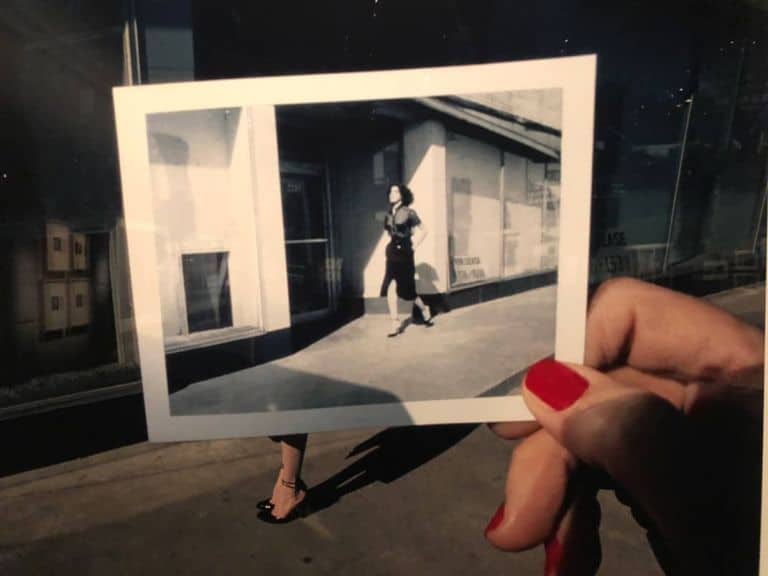I first heard of Be-Thought, an exhibition bringing together past students and teachers from LASALLE College of the Arts, when I was furiously working on a self-portrait at my weekly art class.
Hoping to lighten my serious approach to art, my teacher Ernest Chan began telling me about an exhibition that he and some of his peers and students were coming together for. I put down my blender and eraser, he had my full attention.
Teachers and students showing together? I recalled how a single stroke that Ernest drew on my pad to capture my hair intimidated me… How were these students brave enough to exhibit alongside teachers who were far ahead in their artistic journey?
I wanted to speak with the artists to understand why they came together for a show that would juxtapose them alongside masters and peers who knew them intimately — especially when this would blatantly expose their artistic voices.
The artist’s quest
Monica Winnubst first instigated the idea for a group exhibition. The Dutch artist and LASALLE graduate approached 8 other artists, including two ex-teachers, to participate. She spoke with her former teacher Ernest Chan, who felt that the show would be a moment to pause and consider one’s art alongside other practitioners and long-standing friends; to see if they had stayed on course in their artistic journey.
Monica’s approach to the show reflected a vision to create a space that was equal to those pursuing art — teacher and student alike. “I owed it to my friends in Singapore to do a show together because that is where everything started for me,” Monica explained. “Before I entered LASALLE, I was working…and I was quite old when I started school. My lecturers became good friends, and it was my dream to have a show with them.”
Chan approached Connie Wong, one of the founders of SEED the Art Space, who agreed to host the show immediately. A not-for-profit gallery and the brainchild of LASALLE Asian Art History graduates Connie, Ivy Lam, Lourdes Samson, SEED champions the idea of art for art’s sake.
“This show is an inclusive show…as long as [the artist] wanted to do it, they could come and join us,” Chan commented. He found working with SEED to be “encouraging” as they welcomed the show. Through such peer-to-peer collaboration, Be-Thought was born.
I was reminded of the American creative E.E. Cummings’ advice to his students, in which he aptly summarises originality; something I could apply to understand the quest for an authentic voice in Be-Thought—
“Almost anybody can learn to think or believe or know, but not a single human being can be taught to feel. Why? Because whenever you think or you believe or you know, you’re a lot of other people: but the moment you feel, you’re nobody-but-yourself.”
Celebrated as a poet, Cummings was also an avid artist. However, disillusioned by an art world that focused more on fame, he left most of his works unsigned, believing that art should be for the sake of it.
Exploring bonds that bind
As I entered the exhibition, to my left was Chronicles of The Forgotten Chairs, a group of framed mixed media artworks by Debbie Tan. Perhaps this best exemplified Cummings’ statement.
Four sketches of various chairs were paired with poignant statements like “and then there were two.” Here, the chair symbolises a person, or the memory of someone to whom it belonged, or someone’s daunting future absence.
Since her student days, Tan explored memories of home and the feelings they evoke. Driven by her need to unpack her feelings as a child of divorce, she started to uncover spaces and everyday objects that were linked to memories. While Debbie admitted that she “found it intimidating to be in this group show,” she shared that she eventually wanted to do it for herself, following Monica’s encouragement.
Her new work includes a terrarium-like glass dome, showing a miniature chair waiting in a timeless capsule. Its proud title “Ode to Myself” seemed to suggest breaking free from the bonds of attachment to find herself again. For Tan, this represents how she finally made time for herself, away from the distractions that life as a young mother threw her way.
Delving even further into the notion of attachment is Winnubst’s work Be-Leave. Believing that “the bonding of people” is crucial, Winnubst’s work focuses on “the mother and child bond” and the “gentleness and ugliness” in it.
Her work, a perpetual mobile of sorts, embodies the tenuous parent and child relationship; the inherent baggage of family legacy; and the importance of knowing when to let go for the child to come into its own.
Suspended from a wall-mounted bracket and held in place with stylish silver beads, the installation consists of tree bark hung behind a computer-generated image. Printed on paper, it depicts two female figures signifying the artist and her daughter. It is backlit with a simple LED light to draw attention to their wombs.
She symbolically deploys the Kruiskruid, commonly known as Groundsel flower to mark the women’s ovaries, bringing a gentle touch to the unpretentious work. The wall text explains that the Kruiskruid was used in the past “to ward off evil spirits by placing it in the cribs of babies.” Here, the artist displays her fixation with reproduction and creating life, and how it impacts one’s well-being.
Reflecting on landscapes
Across the room, a pop of colour catches my eye. It is Shaanea Mendis D’Silva’s allegorical reference to the economic and political crises in her home country, Sri Lanka. She deploys rust stains and gold leaf as metaphors for a destructive society, while dark blue fault lines run across hues of earthy saffron and gold to signal deep-seated cracks.
Corrosion and Catharsis reflects D’Silva’s visceral and spiritual experiences. Here, she combines her own anxieties about being away from home to render a layered canvas of abstraction. While the artwork stages a silent protest against the corruption and political nexuses eroding society, it is also influenced by D’Silva’s recent loss of her father to cancer. Symbolising the decay of society and the body, its subtle aesthetics and muted colours also suggest hope for calm amidst chaos.
At the rear end of the gallery, the familiar sight of Chan’s miniatures draws me close. Chan chose 4 out of a series of 100 miniature paintings for the show, seeing them as trophies of moments of reconciliation. The title of the work is inspired by Chan’s childhood penchant for a full score of 100, marked with red ink by his teachers.
The series captures Chan’s avid travels from 1993 to 2019, reflecting scenes of the Swiss Alps, the Mediterranean region, and littorals in the Pacific Ocean. Chan’s mastery over the medium is apparent in his combination of painting and printmaking methods that accurately captures expansive landscapes on wood blocks measuring 3 by 6 cm.
Chan’s works suggest a maturity only possible with age. They move away from the need to scream for attention, instead teasing the viewer to approach them. They reveal the landscapes that he formed an intimate connection with, perhaps depicting moments when he wanted to make them home but chose to return to Singapore instead. To Chan, the works represent his contentedness with life, having “reconciled with the fact that I wanted more but I am now happy with what I have”.
Points of entry
Each artwork on show signifies each artist’s different entry points and their decision to be an artist.
Jase Lim’s point of entry into the show is simple, as suggested by the title of her multi-coloured work – Joy of Being. Lim pinpoints an assignment from art school — which asked her to assess the motivations of viewers for weeping upon seeing the paintings in the Rothko chapel — as a turning point in her artistic journey. This made Lim realise that “there was something more valuable in art, and for that, I had to search within myself.
Pursuing Buddhist studies enabled her to find peace in being herself, without having to seek attention through the extraordinary. Such a philosophy underlies this work. Featuring a tautological universe of clover leaves, it steers clear of the anomalous four-leaf clover, with the artist remaining staunchly in the realm of the ordinary, as symbolised by the three-leaf motif. The bold and flashy colours belie the artist’s quiet contemplations, as they celebrate her intent to seek joy in everyday things.
While some artists presented visually interesting artworks, their voices are perhaps still being shaped. Muted by the interference of professional or domestic life, the works of Soo Min Leong and Yukari Uno reflect their struggles to keep marching onward in their artistic journey.
Leong is a freelance print-maker who fell out of touch with art-making, as she aided other artists or taught students. Watching her students work reminded her of her love for print-making, and it was only during the pandemic that she returned to her practice.
Now living in London, Pothole #2 reflects her daily journey to work on a bicycle, juggling sudden potholes that “are annoying surprises that pop up during an enjoyable journey.” They are perhaps also metaphors for every hurdle that led Leong to stray from her art-making.
Uno’s artwork, in contrast, reminds one of a child’s nursery. Lace, buttons, borders, flowers and pastels recall a child’s eye. As a young mother, she struggled to make art but grew conscious of maintaining a clean environment for her children. She started using environmentally friendly materials, such as recycled or up-cycled materials, in her craft-like explorations. Dyed with onion skin and butterfly pea flowers, her installation Happy Bag symbolises her current identity as a mother.
Perspectives on Ceramics
The veteran Ahmad Abu Bakar’s A Bottle & A Batu – My Art Stories was a unique, bicultural moment in the show. The playful work brings handcrafted and found objects together to question the notion of art-making, a long-time pursuit of the artist.
The title reveals how he and many of us think in both English and our mother tongues. He explores his role as a maker, where he introduces stories to found objects. In doing so, the story also becomes an artwork.
What he makes and finds complements each other, and such juxtaposition might be the most interesting aspect of this artwork. His approach is that of a visual artist, not a ceramicist, explaining that he “emphasises the concept behind the whole object as important, ” thus reflecting contemporary art-making practices.
Be-Thought also helped him reconnect with his students. He says that he “never measured the idea of seniority…[art] is a desert, and we are all here to experience it.”
Unlike her teacher, Lay Leng Tay is a ceramicist, who is drawn to the medium’s functionality. Her works, with their uneven shapes and forms, evoke a nebulous memory of nature.
Occupied with technique and the objects’ physicality, hers is a quest of the mind. Shapes, textures, and methods take precedence in the modest collection of twenty-two ceramics that form the literal heart of the exhibition. Such central positioning testifies to the quiet bond Tay has with this group of artists, as she worked closely with Winnubst to unite the artists.
Final Thoughts
Devoid of fancy lighting or expensive fittings, the stark white exhibition space is minimalist. Installed by the artists and Bakar’s mentees, the show resounds with the comfort evident in the student-teacher relationship — one that is so unique to the art world. Like-mindedness and a constant quest to learn and grow ruled the space, seemingly achieving the utopian oasis that Cummings thirsted for.
Here, the voices of the artists sing clearly and, in some instances, indiscernibly like a seasoned choir well-acquainted with each other. Be-Thought is an exhibition staged by artists, purely for the joy of art-making. Why should you visit the show? Simply, for art’s sake!
____________________________________
Be-Thought is showing at SEED the Art Space till 9th October 2022, from 12pm – 7pm. Click here to find out more.
